[Editor’s note: Much of the following is excerpted from an essay by Samuel Hooper in “The Discovery of Wrangel Island: The Discoverer, Captain Calvin L. Hooper, U.S.R.C.S., 1842-1900,” California Academy of Sciences Occasional Papers, No. 24 (1956), pp. 1-6.]
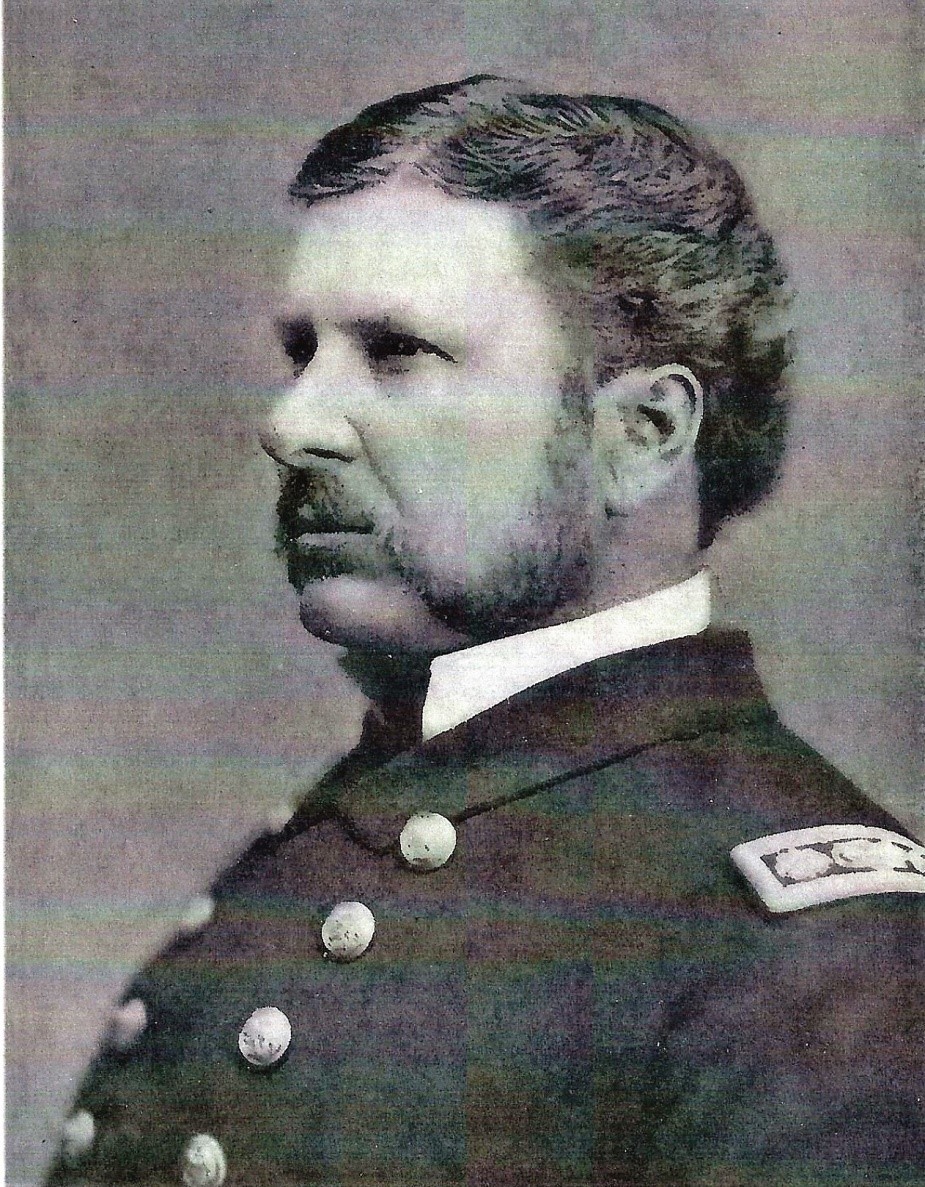 A century has passed since that day when a 12-year-old boy resolutely turned his back on the warmth and security of a New England farm home, determined to seek fame and fortune on the seven seas. The exact manner of his going is not recorded, and certain it is that the path on which he set foot that day led through hardships and dangers, but by following it, he gained recognition and fame, and the esteem of men.
A century has passed since that day when a 12-year-old boy resolutely turned his back on the warmth and security of a New England farm home, determined to seek fame and fortune on the seven seas. The exact manner of his going is not recorded, and certain it is that the path on which he set foot that day led through hardships and dangers, but by following it, he gained recognition and fame, and the esteem of men.
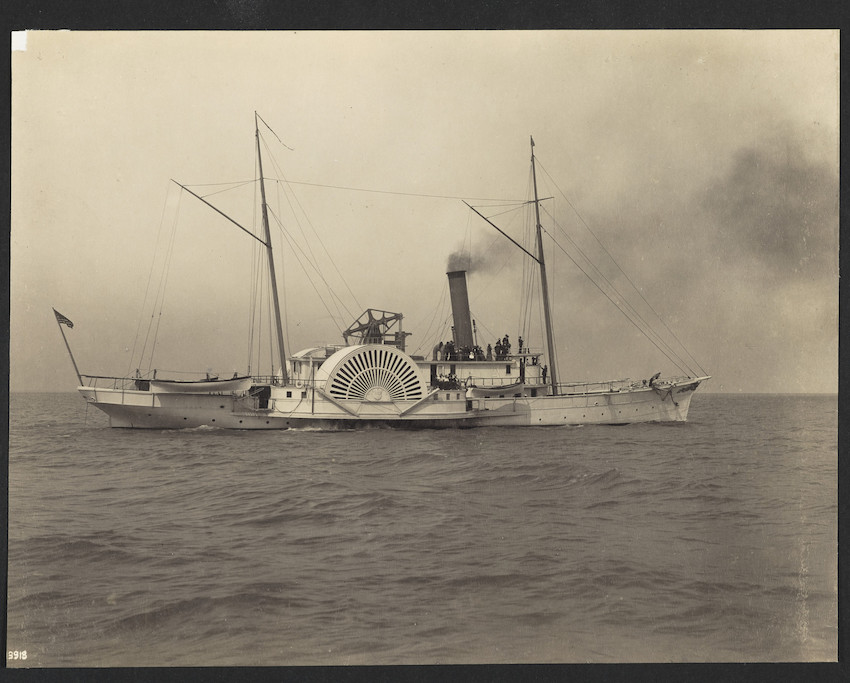 That boy was Calvin Leighton Hooper, born in Boston on July 7, 1842, the son of Samuel and Mary Leighton Hooper. Calvin’s father did not live many years after his son was born. A few years later, his widow remarried. Calvin never accepted the change. No doubt jealous of his mother’s affections and resentful of what he considered an intruder in the family, he quickly reached the decision to follow the call of the sea.
That boy was Calvin Leighton Hooper, born in Boston on July 7, 1842, the son of Samuel and Mary Leighton Hooper. Calvin’s father did not live many years after his son was born. A few years later, his widow remarried. Calvin never accepted the change. No doubt jealous of his mother’s affections and resentful of what he considered an intruder in the family, he quickly reached the decision to follow the call of the sea.
At the close of the Civil War, competent officers were needed for the United States Revenue Cutter Service and having at that time no academy to draw from, certain young officers were selected from the merchant service. Hooper was one of these appointees, and on June 4, 1866, he was made a third lieutenant by President Andrew Johnson, who served as vice-president under Abraham Lincoln. From that point on, Hooper’s career became a matter of record.
Lt. Hooper’s first assignment was to the Cutter Joseph Lane out of San Francisco. For the next few years, he sailed out of that port and cruised in northern waters where he gained an understanding of cold weather conditions that was to serve him so well in later experiences. Later, in the early 1870s, Hooper received a promotion to first lieutenant and orders to Detroit and the Great Lakes Cutter Fessenden.
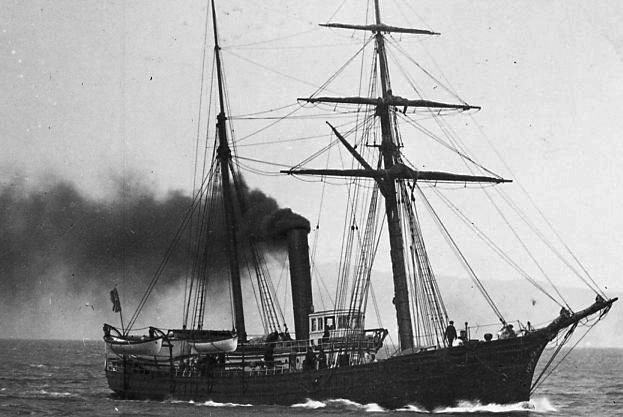 In 1880, the New York Herald newspaper began demanding that efforts be made to locate the privately-funded Arctic expedition vessel, Jeanette, which was commanded by U.S. Navy Lt. Cmdr. George Washington DeLong. DeLong was an experienced and capable officer who endeavored to reach the North Pole by forcing his way into the Arctic ice and counting on the drift to carry him close to the Pole. By 1880, DeLong’s party had been out two years and no word had been received from them for a long time. As a result of the hue and cry that was raised, two relief parties were organized. To search for DeLong, the Navy sent the USS Rodgers and the Revenue Cutter Service sent now Capt. Hooper commanding Revenue Cutter Thomas Corwin.
In 1880, the New York Herald newspaper began demanding that efforts be made to locate the privately-funded Arctic expedition vessel, Jeanette, which was commanded by U.S. Navy Lt. Cmdr. George Washington DeLong. DeLong was an experienced and capable officer who endeavored to reach the North Pole by forcing his way into the Arctic ice and counting on the drift to carry him close to the Pole. By 1880, DeLong’s party had been out two years and no word had been received from them for a long time. As a result of the hue and cry that was raised, two relief parties were organized. To search for DeLong, the Navy sent the USS Rodgers and the Revenue Cutter Service sent now Capt. Hooper commanding Revenue Cutter Thomas Corwin.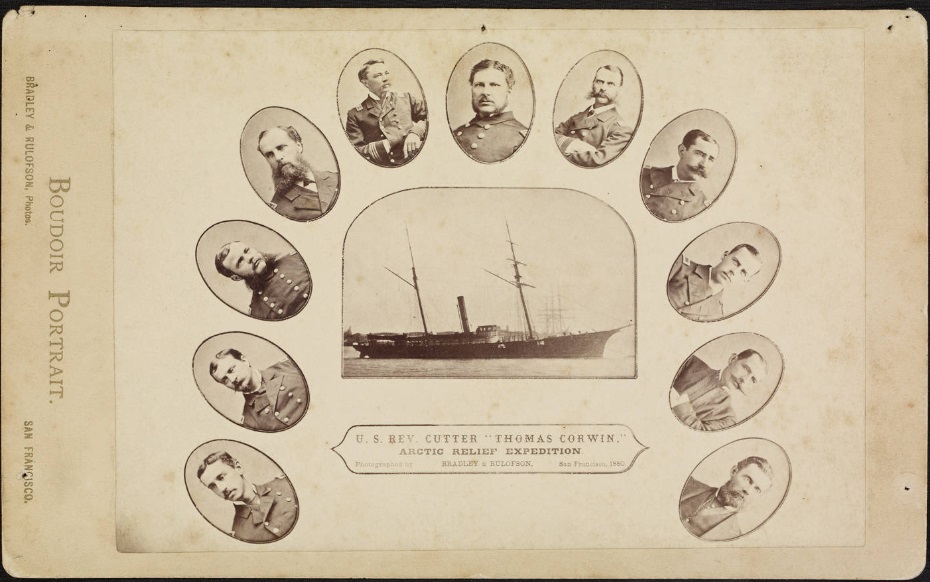
With Hooper commanding, Corwin’s 1880 cruise proved a landmark assignment. Hooper was tasked with searching not only for the Jeannette but also the lost whalers Vigilant and Mount Wollaston. For this patrol, Hooper selected as his executive officer, Lt. Michael Healy, who put to use his Corwin experiences when he later assumed command of Corwin and, after that, as captain of famed Cutter Bear. This mission proved the first time a revenue cutter cruised Arctic waters for an extended period of time.
During the 1880 cruise, Hooper located and mapped coal deposits in cliffs east of Cape Lisburne, Alaska. His crew quarried coal from these deposits and the site became known as the “Corwin coal mine.” Hooper gathered various species of birds, fish and animals, as well as fossils, for scientific study. He also visited native settlements on St. Lawrence Island and confirmed that famine caused by overconsumption of illegal liquor had killed over 1,000 of them. Hooper’s report to Congress on this cruise established him as a competent and able Arctic hand. His 1880 cruise also established the annual Bering Sea Patrol which became a primary mission of West Coast-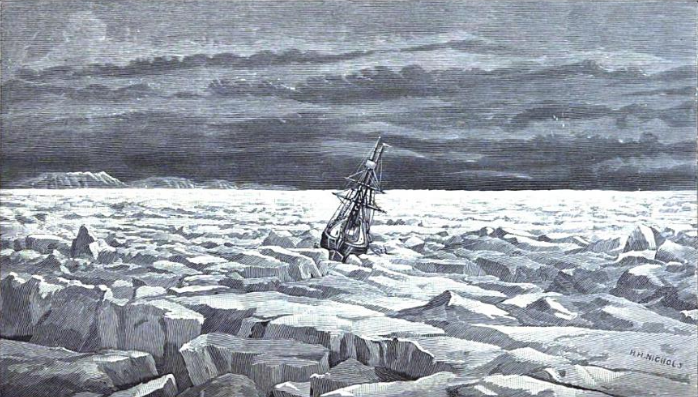 based cutters. However, he had found no trace of the missing ships.
based cutters. However, he had found no trace of the missing ships.
In the spring of 1881, Hooper commanded Corwin on a second Bering Sea Patrol. During this patrol, Corwin cruised the Alaskan coast from the Bering Strait to Point Barrow and continued the search for Jeanette and the whalers. The cutter also carried a scientific detachment, including famed naturalist John Muir, setting the precedent of keeping scientific teams on board Bering Sea Patrol cruises.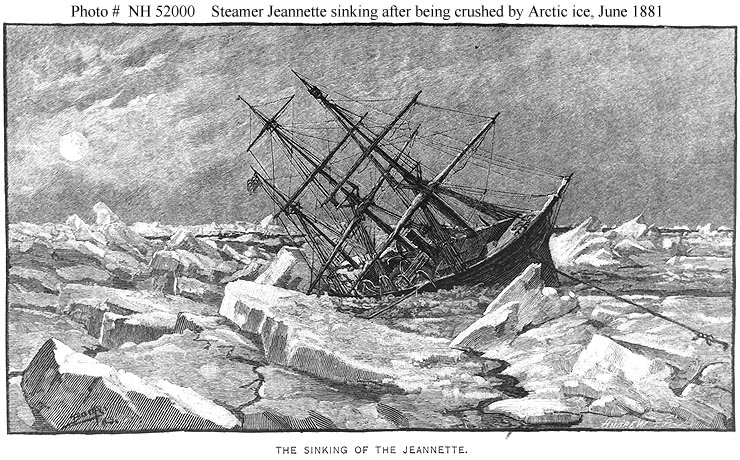
During the second cruise, Hooper innovated the use of dogsled teams, deploying some of his crew on an expedition to search for shipwreck survivors along Siberia’s arctic coast. Artifacts and stories collected from native Chukchi residents indicated that the whaler Vigilant had been crushed in the ice with the loss of all hands after rescuing survivors from the Mount Wollaston before it had suffered a similar fate. Later, Hooper landed men on uninhabited Herald and Wrangel islands in the Chukchi Sea and claimed them for the U.S. He also learned that the Jeanette had been crushed in the ice with no sign of survivors. Later, it was learned that DeLong and 20 crewmembers had perished while the rest of Jeanette’s crew escaped to the Siberian coast, located a native settlement and survived with the help of the natives.
Before Corwin’s return home, ships reaching San Francisco brought reports of Hooper’s voyage and the discovery of Wrangel Island. These reports found their way into the press and a pamphlet describing the voyage was published by the Geographic Society of the Pacific. In addition, John Muir wrote letters home and these were eagerly sought after by publications. The result was that, even before the return of the Corwin, the fame of the voyage had spread. Upon his return from the 1881 voyage, Hooper found himself the center of attention for his feats in the Arctic.
As a result of his 1880 and 188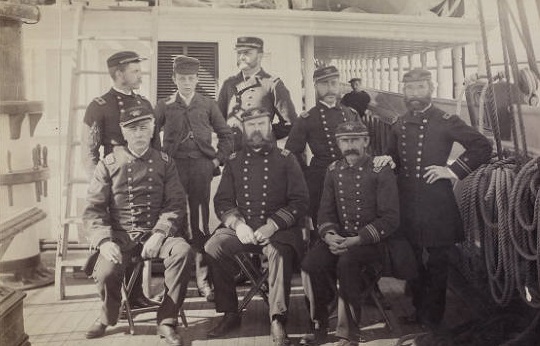 1 voyages, Hooper was permanently assigned to the Bering Sea Patrol, commanding Cutters Rush and Corwin at various times. In the early 1890s, the patrol was handled for two years by the Navy, so Hooper served under famed admiral Robley “Fighting Bob” Evans and the two became fast friends. After the Navy returned the operation to the Treasury Department, Hooper himself was put in full command of the Bering Sea Patrol and extended the thanks of the Department for coordinating its activities. Hooper was also appointed superintendent of the Office of Construction & Repair for the Revenue Cutter Service on the Pacific Coast.
1 voyages, Hooper was permanently assigned to the Bering Sea Patrol, commanding Cutters Rush and Corwin at various times. In the early 1890s, the patrol was handled for two years by the Navy, so Hooper served under famed admiral Robley “Fighting Bob” Evans and the two became fast friends. After the Navy returned the operation to the Treasury Department, Hooper himself was put in full command of the Bering Sea Patrol and extended the thanks of the Department for coordinating its activities. Hooper was also appointed superintendent of the Office of Construction & Repair for the Revenue Cutter Service on the Pacific Coast.
In 1898, war was declared against Spain and Hooper immediately requested active duty. The Secretary of the Treasury wired him that for the moment he was needed where he was, but thanked him for the prompt offer. At the outbreak of the war, the modern revenue cutter McCulloch was l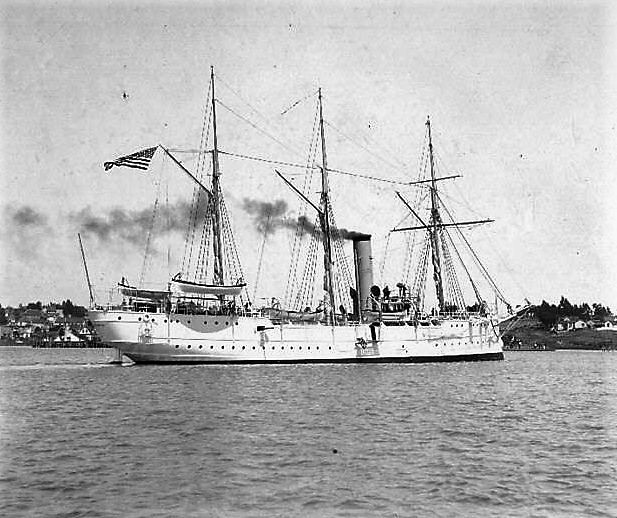 aunched in New York and sailed around the globe to join Commodore George Dewey’s Asiatic Squadron in Hong Kong. And, on May 1, 1898, McCulloch took an active part in the destruction of the Spanish fleet at Manila Bay.
aunched in New York and sailed around the globe to join Commodore George Dewey’s Asiatic Squadron in Hong Kong. And, on May 1, 1898, McCulloch took an active part in the destruction of the Spanish fleet at Manila Bay.
After the battle, in June 1898, McCulloch’s captain was relieved of command and ordered home having passed retirement age and suffering from poor health. Hooper was ordered to leave San Francisco on a transport taking troops to the Philippines and, on arrival, assume command of the McCulloch. He reached Manila in July 1898 and took over his new duties at once. On Aug. 16th, word was received of the war’s end and shortly thereafter Hooper was ordered to “show the flag” in Hong Kong and Yokohama and carry official news of the victory to San Francisco. At the conclusion of his voyage home, Hooper retained command of McCulloch until failing health forced a change.
Hooper’s hard duty in the tropics had taken its toll. After a severe illness, likely malaria, he died at his home on April 7, 1900, at the age of 58. Capt. Calvin Hooper had served on the Great Lakes and brought home the famed cutter McCulloch, but his greatest contribution to Coast Guard history took place aboard the Arctic cutter Corwin and other Bering Sea Patrol cutters. He was buried with full military honors near his home in Oakland, California.